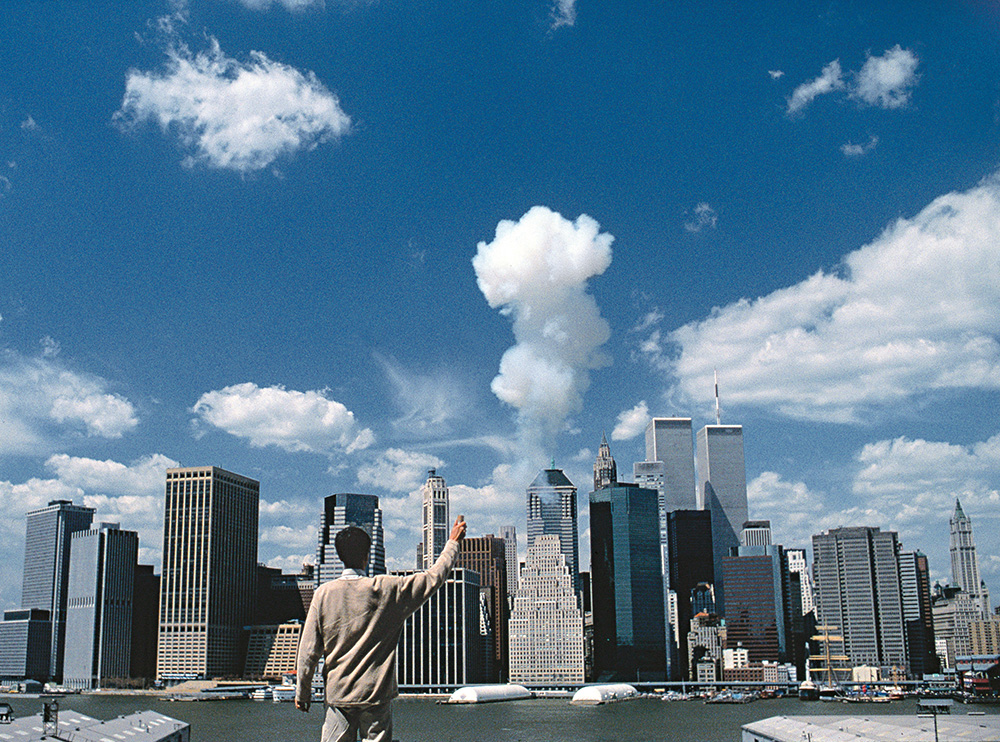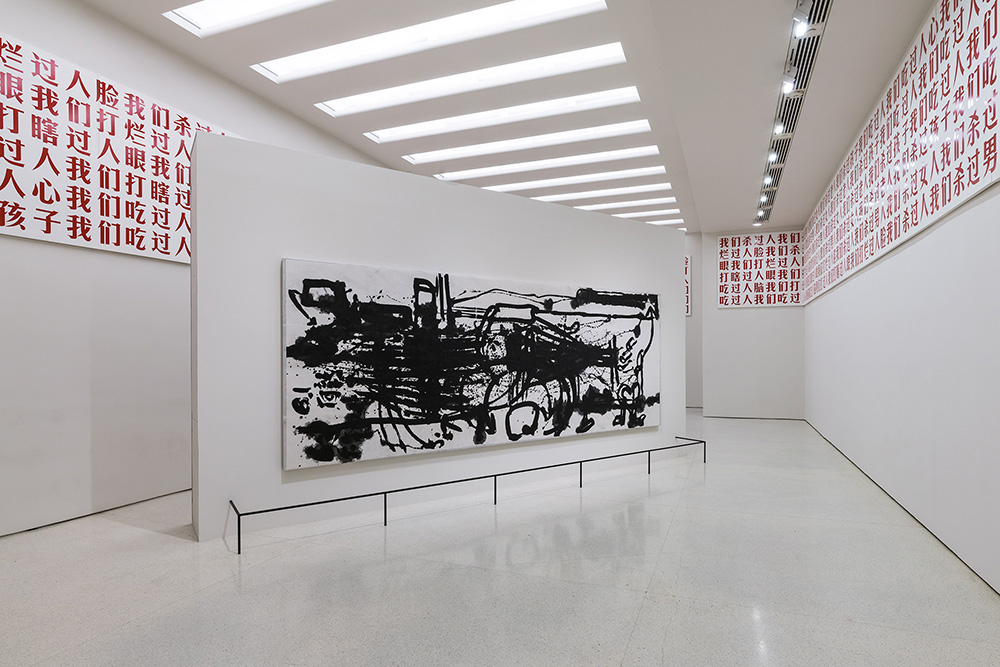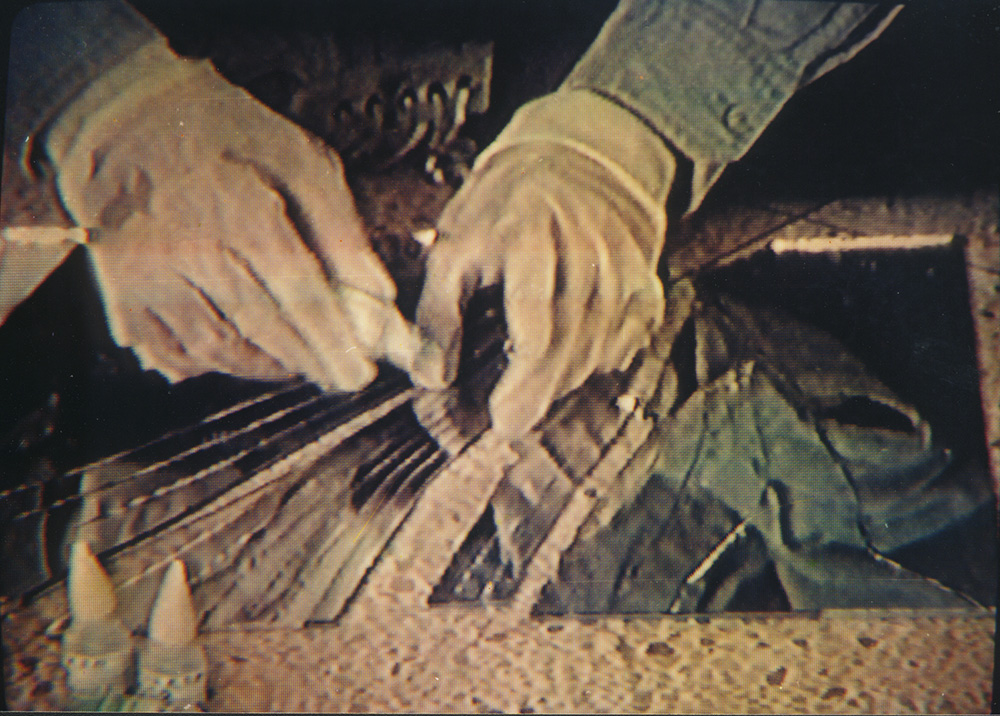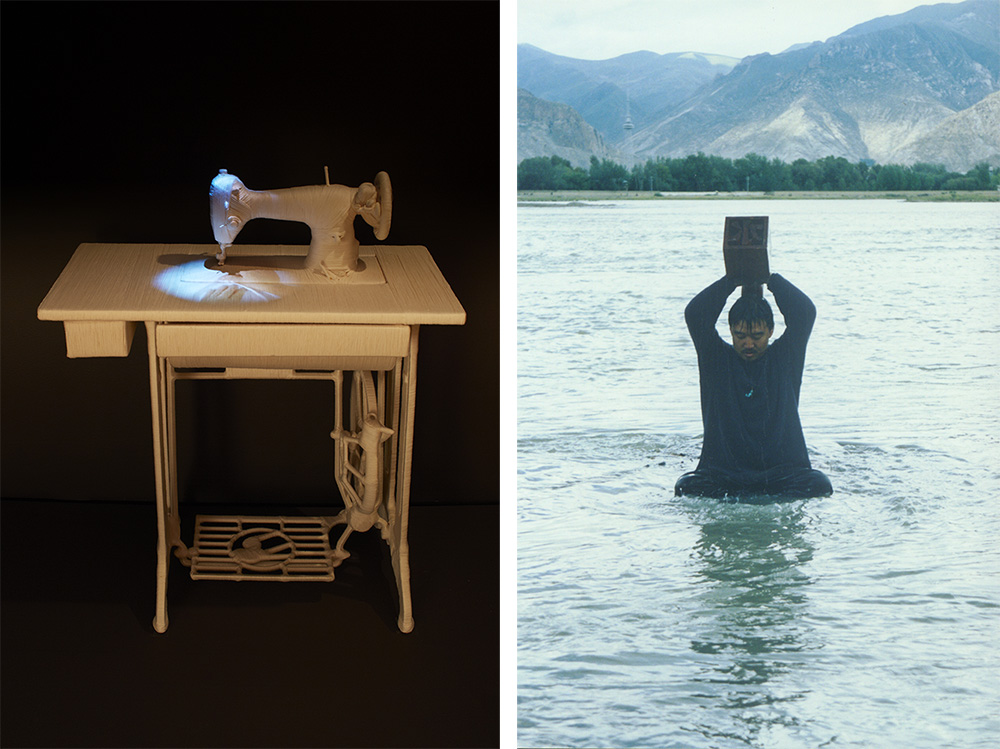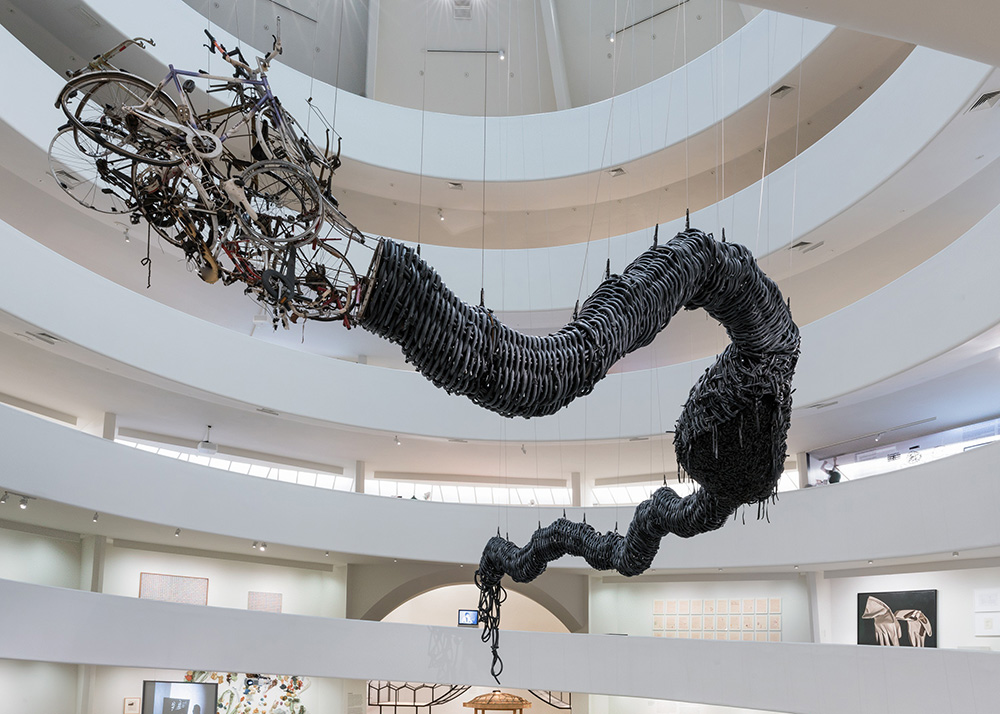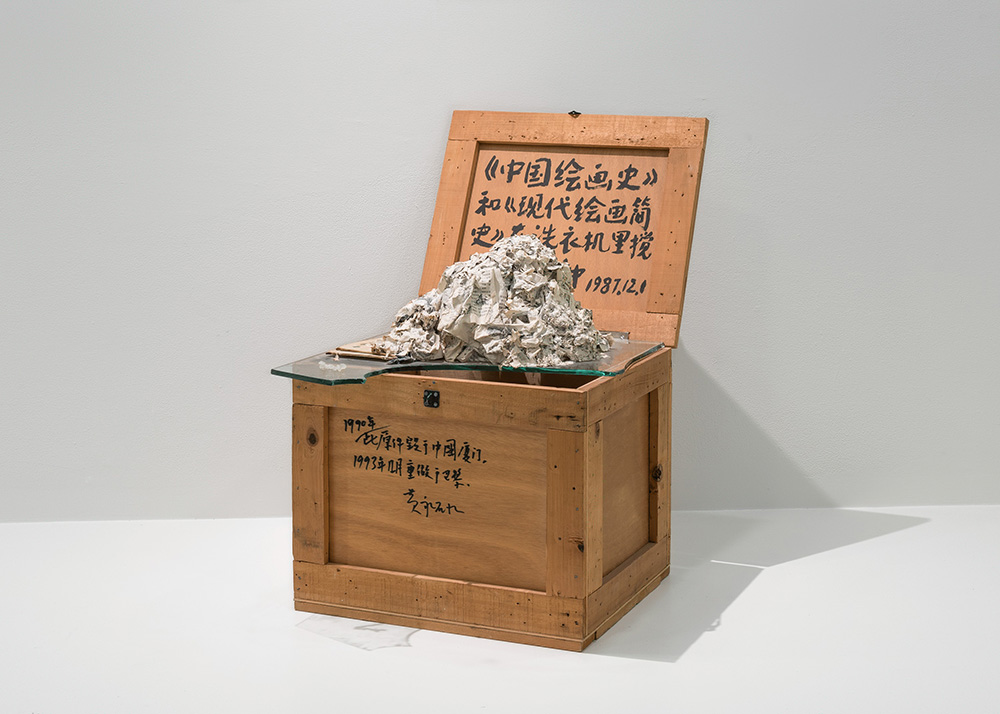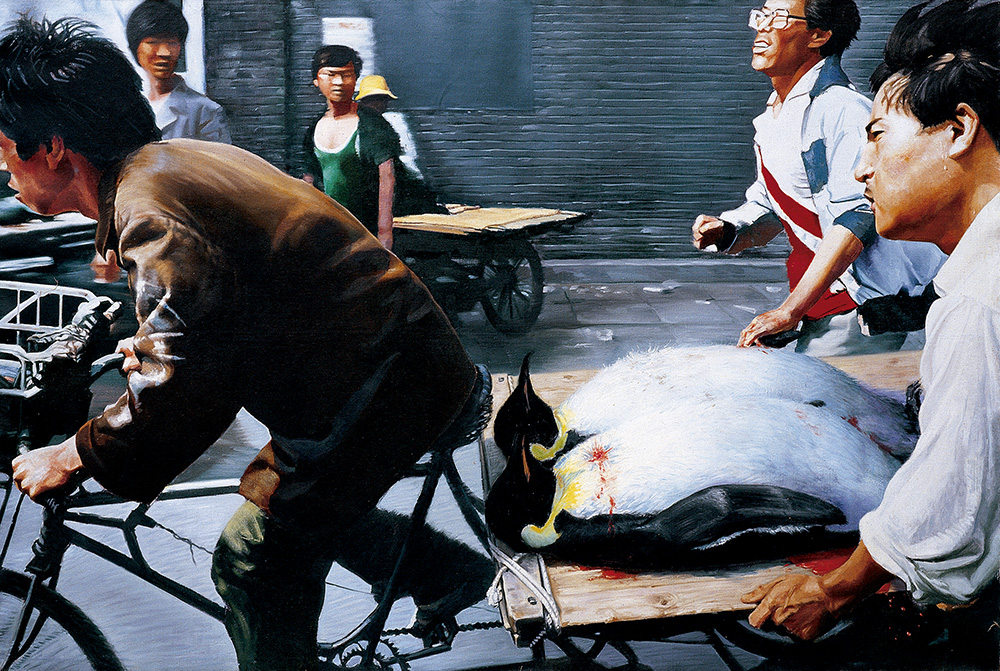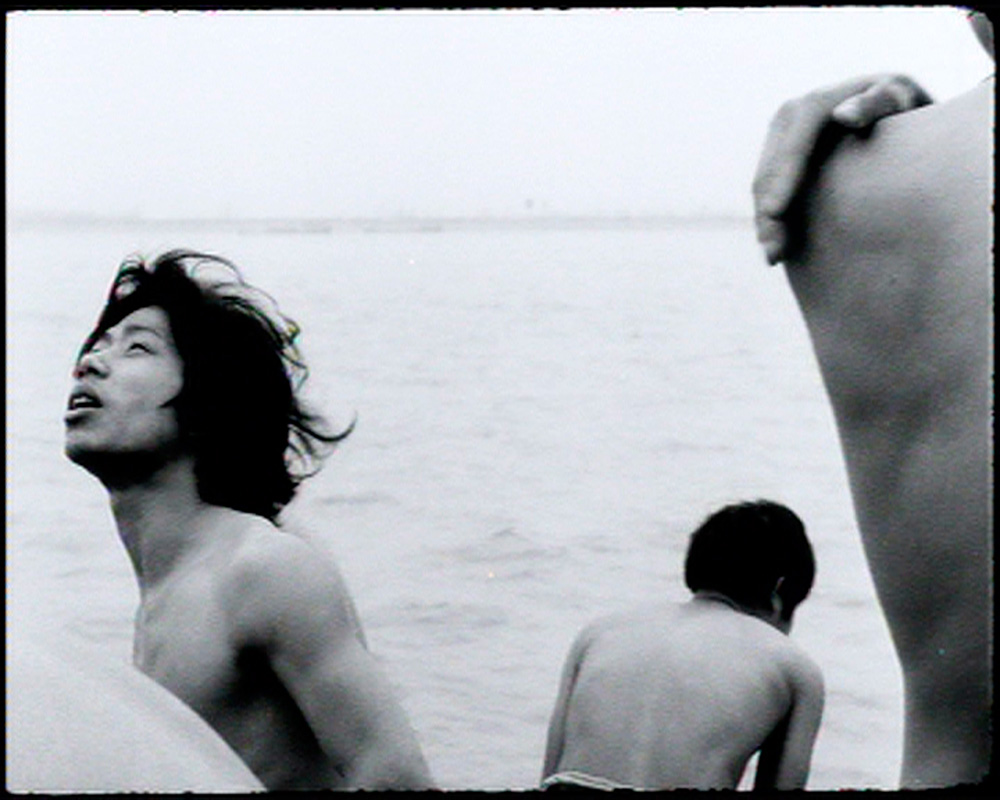ART CITIES:Bilbao Art and China after 1989-Theater of the World
 The exhibition “Art and China after 1989: Theater of the World” is one of the largest exhibitions held to date on Chinese contemporary art during the most transformative period in the country’s recent history, from 1989, the year of the Tiananmen protests, to 2008, when the Olympic Games were held in Beijing.
The exhibition “Art and China after 1989: Theater of the World” is one of the largest exhibitions held to date on Chinese contemporary art during the most transformative period in the country’s recent history, from 1989, the year of the Tiananmen protests, to 2008, when the Olympic Games were held in Beijing.
By Efi Michalarou
Photo: Guggenheim Museum Bilbao Archive
Presenting 60 artists and 120 artworks, the exhibition “Art and China after 1989: Theater of the World”, at the Guggenheim Museum Bilbao, provides a fresh interpretive survey of Chinese experimental art in a context framed by the end of the Cold War, the spread of globalization, and the rise of China as a world power. The exhibition is divided into thematic and chronological sections, and encompasses a variety of artistic practices, including performance, painting, photography, installation, and video art as well as sociallyengaged projects. With a concentration on the conceptualist art practices of two generations of artists, this exhibition examines how Chinese artists have been both critical observers and agents of China’s emergence as a global presence and places their experiments firmly in a global art-historical context. The Introduction section features two major works central to the exhibition narrative. The first is the two-part installation, “Theater of the World” (1993) and “The Bridge” (1995) by Huang Yong Ping. Drawing on Daoist cosmology and magic, Michel Foucault’s theories on modernism as prison, and debates on the ills of globalization, Huang’s “panopticon” is a living metaphor of the modern nature of chaos. Also on view is a six-panel ink painting by Qiu Zhijie titled, “Map of Theater of the World” (2017). Commissioned by the Guggenheim Museum, this massive map based on the artist’s research of the show illustrates the political and cultural histories of China and the world spanning the 1980s to now, including many of the key works of art featured in the show. 1989: No U-Turn [Gallery 208], this section focuses on two events that marked 1989 as a watershed date in the history of contemporary China. The exhibition “China/Avant-Garde” promoted with the traffic sign symbol No U-Turn, opened in Beijing at the National Art Gallery in February 1989. This monumental exhibition canonized the conceptual and experimental art that had flourished throughout the 1980s in the first decade of Communist Party statesman Deng Xiaoping’s liberal Open and Reform Era. Works exhibited in that show are on view, including Gu Dexin’s “Plastics – 287” (1983-1985), hundreds of found everyday plastic objects blowtorched into grotesque, abstract forms. On June 4, 1989, the army cleared demonstrators from Tiananmen Square, marking the end of a democracy movement to which advanced art had been closely allied. Wang Xingwei’s painting, “New Beijing” (2001), is based on a famous photograph of civilians rushing two young protesters to the hospital on a tricycle flatbed. In Wang’s version, the students are replaced with bleeding emperor penguins. New Measurement: Analyzing the Situation: The events of 1989 and their aftermath transformed China. Artists moved towards analytic, conceptual practices to express a critical consciousness doubtful of authority systems, including bureaucracy, ideology, and language itself. Works like Zhang Peili’s video, “Water” (1991) and Wu Shanzhuan’s absurdist diary, “Today No Water” (1986-96) evinced mechanistic processes, documentary sensibilities, and minimalist means that slyly mimicked the systems the artists sought to subvert. 5 Hours: Capitalism, Urbanism, Realism: In the spring of 1992, Deng Xiaoping made his “Southern Tour” to promote China’s economic liberalization and ushered in a new era of free-market capitalism and neoliberalism. Earlier dreams of democratic transition succumbed to a new kind of authoritarianism as urbanization and globalization occurred at an unprecedented scale and speed, turning China into “the world’s factory”. Realist painters exposed the tensions between individual lives and such massive change in works like Yu Hong’s Witness to “Growth, 1992” (2001), while the collective Big Tail Elephant Working Group (active 1990-98) staged satiric interventions in the streets and construction sites of the rapidly growing city of Guangzhou. In “Safely Maneuvering across Linhe Road” (1995), performance artist Lin Yilin stacks and unstacks cinderblock walls in the middle of the city’s busiest thoroughfares, while onlookers barely notice amid all the construction commotion. Uncertain Pleasure: Acts of Sensation: In the mid-1990s, conceptual art practices and postmodern criticality inspired some of the most important experiments in performance, photography and video art in China. Ai Weiwei, recently returned from a decade in New York, staged a performance “Dropping a Han Dynasty Urn” (1993); his nonchalant destruction of an ancient artifact in front of a camera critiques cultural value systems. Works displayed in historical radical exhibitions of the late 1990s are featured in this section, like Zhang Peili’s video installation “Uncertain Pleasure II” (1996), featuring 12 monitors each showing a cropped, close-up frame of hands scratching bare flesh. Like their counterpart phenomenon, the Young British Artists, these artists concentrated on the most basic level of physical and psychological experience, or, sensation, to bring art back into the realm of visceral reality. Otherwhere: Travels Through the In-Between. Running alongside the history of contemporary art inside China is a parallel history of Chinese artists working and exhibiting abroad. In the 1990s and early 2000s, international biennials and exhibitions of global contemporary art staged sweeping narratives engaged with topical themes such as identity, diaspora, and globalization. The Paris-based artist Chen Zhen created “Precipitous Parturition” (2000), a 20-meter long writhing dragon made of bicycle inner tubes suspended from the ceiling in the literal throes of globalization; its belly is covered with tiny black plastic cars, as if China as a nation of bicyclists is giving birth to its own extinction as cars take over. Cai Guo-Qiang’s gunpowder drawing “Ascending Dragon: Project for Extraterrestrials No. 2” (1989) is a diagram for a proposed explosion event whose fireworks would ignite the French Post-Impressionist Paul Cezanne’s Mont Saint Victoire with a dragon form scaling its heights, literally fusing East and West to produce a new cultural intelligence outside of linear time. Whose Utopia: Activism and Alternatives circa 2008. Beijing’s winning bid to host the 2008 Summer Olympics conferred validation on China’s emergence as a global power. Skeptical of the party-state’s Olympic motto, “One World, One Dream” the artists and collectives in this section created their own utopian projects, seeking to effect social change through direct action with online and real communities. The common medium was the Internet, as in the “Shanghai Contemporary Art Archive Project” (1998-2012) that used the Internet’s open forum to produce China’s first online contemporary arts community; or Cao Fei’s “RMB City” (2007-11), a dystopian Chinese city on the interactive platform Second Life. Ai Weiwei’s activist use of the Internet culminated in “Citizens Investigation” (2009-10), where hundreds of volunteers helped identify and post the names of over 5000 children who had perished in shoddily built state schools during the 2008 Sichuan earthquake. Coda, the final section of the exhibition presents three works, each created to mark an anniversary of the June 4, 1989 Tiananmen Incident. The central installation by Gu Dexin, “2009-05-02” (2009) is composed of 38 panels of striking red text that repeats eleven lines confessing atrocities, including “we have eaten people.” This alludes to the modernist writer Lu Xun’s masterpiece short story, “Diary of a Madman” (1918), a veiled critique of authoritarian societies that value collectivism over the individual.
Info: Curators: Alexandra Munroe, Philip Tinari, Kyung An and Xiaorui Zhu-Nowell, Guggenheim Museum Bilbao, Avenida Abandoibarra 2, Bilbao, Duration: 11/5-23/9/18, Days & Hours: Tue-Sun 10:00-20:00, www.guggenheim-bilbao.eus
